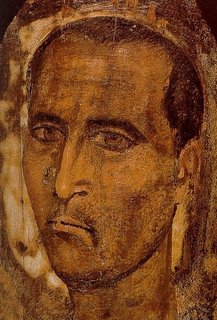St. Agnes of Bohemia

No better testimony could be found to the ideals of St. Francis of Assisi than the fact that the Franciscans spread internationally even during his lifetime. Agnes of Bohemia (1205?-1282) was influential in introducing both the Friars and the Franciscan Second Order (the Poor Clares) into her country north of the Alps.
Agnes was of royal blood. A descendant of the popular "Good King Wenceslaus," her father was Ottokar II, King of Bohemia; her uncle was Andreas II, King of Hungary; and she was a cousin of St. Elizabeth of Hungary. Inevitably, in the case of contemporary royal families, she was betrothed at three to Boleslaus, the son of Henry, Duke of Silesia, and sent to Silesia to be educated in her future country. Three years later, when Boleslaus died, Agnes was called home. But at nine, she was betrothed again. This time it was to Henry, son of Emperor Frederick II. Now she was sent to Austria, to be raised as an Austrian.
The little princess had not been asked, of course, what she thought of these arrangements. Actually her distaste for them increased, and her desire increased to become a consecrated virgin and lead a life of prayer and good works. She prayed that this favor might be granted to her. It was not given her at once. Her brother, King Wenceslaus of Bohemia finally arranged for her to marry Emperor Frederick II. When they were about to escort the princess, now a handsome 28, to Germany for the wedding, Agnes pleaded with Pope Gregory IX to intercede on her behalf, assuring him that she had never consented to the wedding, and wished nothing more than to become a bride of Christ.
This time she was given her way. Free to live her own life, she began to give her service and possessions to churchly causes. Her father, most likely at her request, bad introduced the Franciscans into Bohemia. She saw to it that a convent was built in Prague to accommodate them. She and her brother set up a large hospital for the poor and brought in the Knights Hospitallers of the Cross and Star to manage it. Agnes and her brother also built a convent for the Poor Clares - the Second Order of the Franciscans. Agnes had meanwhile been in contact with the foundress, St. Clare of Assisi. When the building was complete, Clare sent five nuns from Italy to open the house. On Pentecost 1236, Agnes herself fulfilled her dream, receiving the veil of the Clarissas. What was especially interesting was that her becoming a nun caused a wide stir of admiration and a hundred young Bohemian women of good family followed her example. Furthermore, women of noble and wealthy families in other countries likewise sought to imitate her, either by founding Franciscan convents in their own localities or by entering the community themselves. When we consider the rugged poverty that St. Clare insisted on, we get the striking vision of highborn women engaged in the most menial tasks and living the most austere lives.
St. Clare and Sister Agnes had meanwhile become, by correspondence, the closest of friends. Clare's letters to her Bohemian colleague are most tender. Agnes also asked Clare for a souvenir of their friendship. The foundress responded with three mementos, all typical of their symbolism of the donor. One was a wooden cross; another was a linen veil; and the third was the crude earthenware bowl out of which she drank.
Nominated abbess of her convent by Pope Gregory IX, Sister Agnes accepted only with reluctance. Having successfully avoided political marriages in her youth, Agnes of Bohemia lived as a spouse of Christ for a half century, dying at the age of 77.
It is no surprise that her countrymen and those who knew her venerated her as a saint from the moment of her death. There was no formal beatification, but Pope Pius IX declared her "equivalently beatified" by a decree of December 3, 1874. On the occasion of his pastoral visit to Czechoslovakia, Pope John Paul II formally canonized Blessed Agnes on November 12, 1989. In doing so, he reminded that Communist country of one of the glories of its Catholic past .
~ Father Robert F. McNamara


0 Comments:
Post a Comment
<< Home